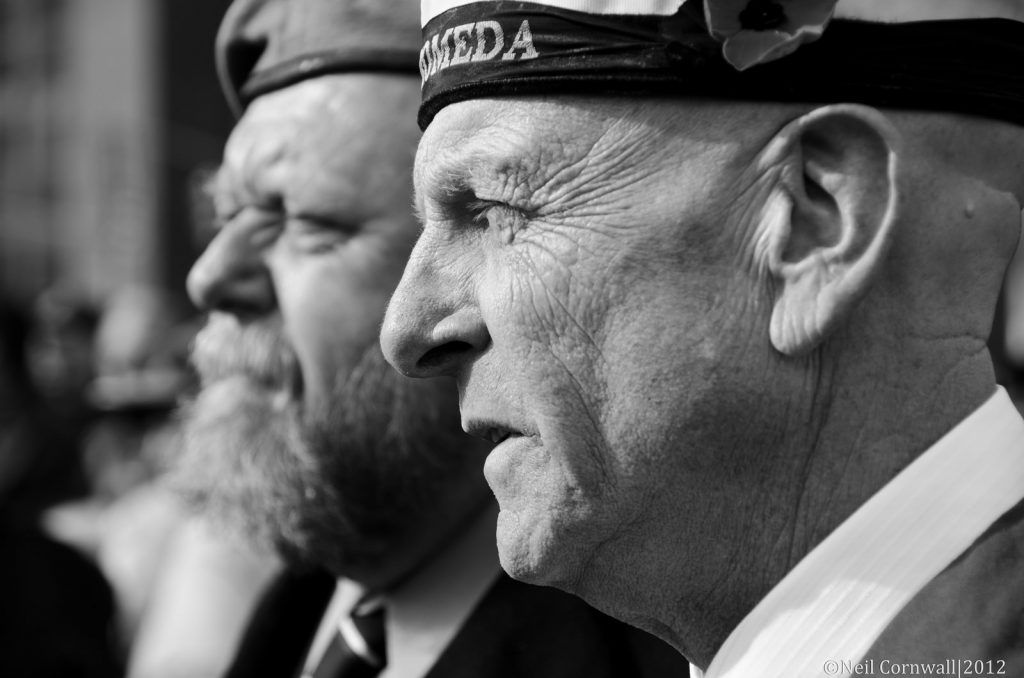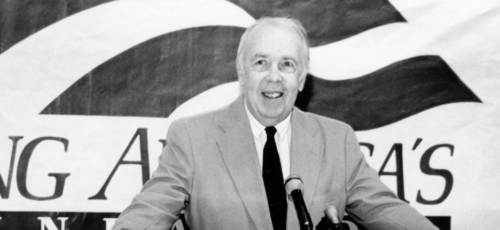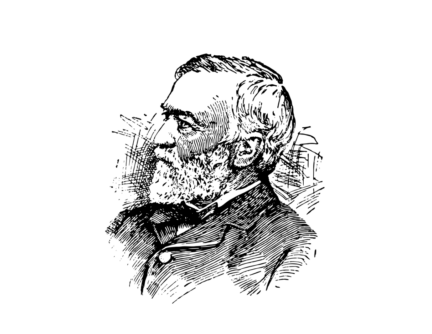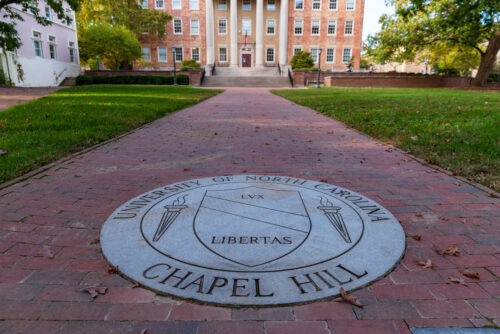What are the best ways for donors to help veterans?
What are the best ways for donors to help veterans? The Philanthropy Roundtable published Uniform Champions, by Thomas Meyer, who directs veterans’ programs for the Roundtable. The guidebook, which is available for free as a PDF here, has a good deal of interesting reporting on ways donors are coming up with programs that help veterans succeed in life.
In a preface, Christian Anschutz, a director of the Anschutz Foundation, suggests that a fundamental principle for donors is to come up with ways to be helpful that do not encourage or foster dependency. “If donors or nonprofits simply give things to veterans instead of challenging them or helping them to become their best selves,” he writes, “these young men and women are at the risk of becoming dependents, or languishing well below their potential—just like anyone else who is told he is entitled, or broken, or not responsible for his life. Donors who want veterans to thrive should help them become self-reliant.”
Of course, the Department of Veterans Affairs, whose budget has doubled in the past decade to $182 billion, offers veterans many services. But it also receives far less scrutiny from think tanks and other outside observers than do the Department of Health and Human Services or the Department of Education.
Because the VA receives so little attention, most civilian readers have far less knowledge of the agency’s rules than they would of, say, Social Security disability programs. Meyer should have spent more time explaining VA practices to outside observers.
A crucial example concerns the methods by which the Department of Veterans Affairs rates a veteran as disabled. Spending on disabled veterans rose, in constant 2016 dollars, from $21 billion to $77 billion between 2001-2016. In 2013 the department, for the first time, spent more on disabled veterans than on medical care for non-disabled veterans.
Meyer argues that the way the government determines if a veteran is disabled “uses WWII-era labor market expectations to send monthly checks to veterans based on antiquated and unchanging medical diagnoses, creating perverse incentives that discourage recovery, employment, and independence among the injured.”
The Philanthropy Roundtable, with grants from the Anschutz, Milbank, Arnold, Wilf Family, Morgridge Family, Bradley, Weinberg, Diana Davis Spencer, and Kovner Foundations and the Daniels Fund, has created the Independence Project to come up with ways that federal disability programs for veterans can be reformed.
Meyer also tries to keep his book free of politics. That’s understandable, but in doing so he elides over political explanations for behavior that seems unusual.
For example, he has one chapter discussing efforts by the Ahmanson Foundation to aid colleges in recruiting veterans. The foundation has created the Ahmanson Veteran Scholarship Initiative, which gives $70,000-100,000 grants to two dozen California colleges and universities to help them recruit veterans, with the goal of having each school have one more veteran enter a class each year than in the past.
Meyer offers many reasons why colleges are wary of admitting veterans. Some don’t like the idea of having freshmen who are older than many seniors. Others won’t accept credit for skills veterans learn on duty, even though, for example, the foreign language courses held by the Army’s Defense Language Institute are as good as and probably better than those offered by most universities.
But Meyer doesn’t admit to a fundamental reason why schools such as Princeton, Duke, and Harvard only have five or fewer veterans: their admissions officers are firmly anti-military. Of course, schools won’t admit this, but Meyer could have made the point.
Uniform Champions has 11 case studies of donors that have come up with interesting, innovative ways to help veterans, with a concluding chapter on the creation of the Independence Project.
Perhaps the most interesting case study is that of New York City donor Steve Cohen’s efforts to help veterans with post-traumatic stress disorder (PTSD). He created the Cohen Veterans Network and Cohen Veterans Bioscience to help veterans with stress-related disorders by creating five new clinics and convening meetings of neuroscientists to determine what we do and don’t know about PTSD.
He concluded that, at most, 20 percent of vets who went to his clinics were suffering from PTSD. The scientists told Cohen that there is a great deal we don’t know about PTSD, including what it is exactly, since “doctors must rely on self-reported symptoms that are difficult to verify and are often separate from other medical conditions.” Moreover, “stress disorders are too fuzzy, subjective, and risky to attract much pharmaceutical investment.” So Cohen has given grants to leading organizations (such as MIT’s Broad Institute) to find ways to more precisely define PTSD and come up with new drugs that could be helpful.
Other case studies in this book include:
- The Call of Duty Endowment, created as a nonprofit spinoff of the popular “Call of Duty” video game, which not only funds organizations that find jobs for veterans, but offers an auditing service, with a “Seal of Distinction” offered to groups that pass a tough outside audit.
- The Schulz Family Foundation (created by the founder of Starbucks), which funds programs at military bases to prepare veterans for entering the civilian labor force.
- The efforts of two foundations created by Jerome Kohlberg (the lead partner in Kohlberg Kravis Roberts, the leveraged-buyout firm) to provide scholarships for veterans and to coordinate efforts for a new GI Bill for veterans.
- The Albertson Foundation’s efforts to help veterans in Idaho enter the labor force.
- The Marcus Foundation’s efforts to fund brain-injury research and to help veterans and civilians connect “through regular physical and social activity.”
- The Jonas Family Fund’s efforts to help pay for the education of nurses who want to pursue careers in military hospitals or in helping veterans.
- The lessons the long-established Weinberg Foundation learned when they began to provide grants for services for veterans.
- The USAA Foundation’s programs offering assistance to caregivers of veterans and “to provide resources and community for families of servicemembers who died in the line of duty.”
“We hope that the sterling givers profiled in this book,” Meyer concludes, “inspire you to make your own mark on the field.”
Photo credit: Neil Cornwall via Visualhunt.com / CC BY-NC-ND
This article was originally published 05/25/17 and has been more recently republished on Veteran's Day on 11/12/18.







My husband is a u.s army veteran 28yrs retired and we have been looking for help with our ghostjome here in Colorado but every time we ask the VA for help there are no funds. Our trailer needs some serious work and the roof is bad we have exhausted all money but still are short. We need some suggestions as to where to go from here. My husband is terminally ill also.
Thank You All,
I am a retired army veteran. I am rated by the VA as 80% service connected/disabled. I retired after 21 years serving in the U.S. Army Corps of Engineers. After retiring in 2002, I started working within DHS as a TSA officer until I resigned for medical reasons in 2012. The DAV and the VA make sure My financial and medical needs are taken care of. I want to give back to veterans suffering from depression with my talents as an artist. I believe less medicine would be more beneficial for myself and many veterans who have multiple conditions which in my case require me to take 13 different pills throughout the day. Keeping up with it all and the adverse side affects on internal organs is a great concern and a reality that can be delayed if not avoided entirely. Without realizing it, I have used art,i.e. drawing,painting, sculpture,woodwork,crafts,etc. As therapy for depression and anxiety . It helped build confidence,self esteem,etc. The only thing that helped more was serving or country for a total of 31 years. Now, that service part of service is a memory. I am idle and haunted by intrusive memories and nightmares. Pain and depression. That is soothed…..and eased not from. Pharmacy meds…the make me feel like a zombie. What helps is my artwork. With it I am able to express things I can not seem to define ….express… or even begin to understand. My artwork is my medicine. It is the medicine that works for me. I would like to create a space in our community that offers art as therapy for veterans and first responders. I believe through a program which uses art as therapy that includes these two groups of community leaders will eventually teach us that we are more alike than different. That we can find relief through expression and hopefully heal with less prescription drugs. We have a Performing Arts facility in our community (Killeen/Fort Hood,TX). There are spaces that may be rented for art…music/sound production….spoken word… Concerts…..etc. All art forms….all therapeutic. What we pack is funding…art supplies….and the voice and sponsorship that will make Art therapy achieve the level of success that will Heal!
Thank You,
SFC (retired)
Christopher C. Queen Sr.
U.S. Army Corps of Engineers
Mairead Barrett, thank you very much for sharing this information. It is most helpful and inspiring.